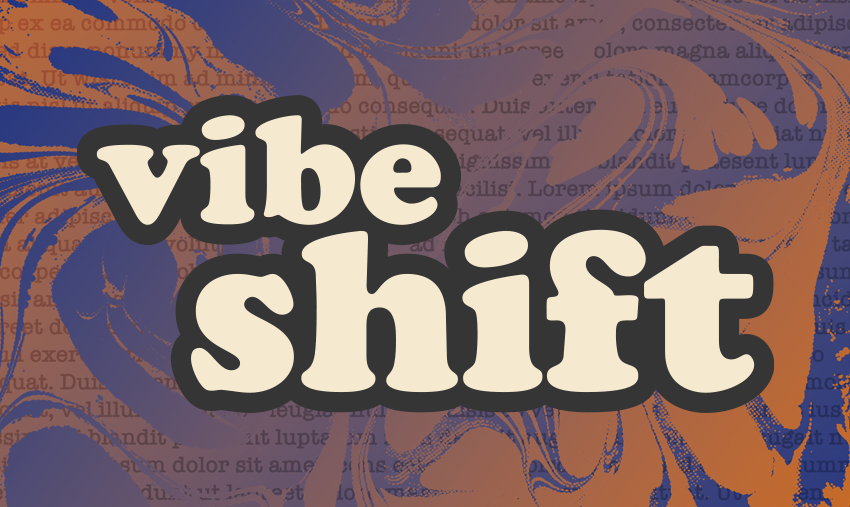We will survive!
The debut of our Vibe Shift column looks at... erm, 'vibe shift'

Vibe Shift is a column by linguist Nicole Holliday that examines how words and phrases are moving across the internet. Each month, we’ll explore new topics related to how the language and culture are changing.
In an August 2, 2023 article about rising COVID-19 cases, a Yahoo News writer claimed: “While most people aren’t locking down or sending kids home from summer camp, the virus appears to be causing a vibe shift.”
Thus, the term “vibe shift,” with the meaning of a change in the paradigm of something, has officially jumped the shark. Pack it in, kids, no one cool will ever say “vibe shift” again – if they ever did in the first place.
In my day job as a linguist, I frequently discuss the life cycle of slang, which I imagine goes something like this:
Step 1: Young, cool group (frequently composed of folks from marginalized backgrounds) starts using a new term.
Step 2: Slightly older, less cool people (think college students) start using it.
Step 3: The term gets picked up by olds, who target the young, hip people with marketing using their original term (see this Vulture piece on “Brand Twitter”) . But by this point, the young have moved on, and the term has become cringe.
The Yahoo News use of “vibe shift” arguably represents a fourth step that many neologisms never achieve: unironic use in a piece of mainstream journalism, providing evidence that the term really is a part of our mainstream lexicon (at least for now).
But where did it come from?
Journalist Sean Monahan claims to have coined the phrase in a Substack newsletter in June 2021, though claims to such coinages are frequently dubious. Language users are really bad at knowing when and where we started using particular terms, and disputed coinages are frequently part and parcel of the slang game. Even Merriam-Webster itself generally refuses to adjudicate such disputes.
But even if we give Monahan the credit for popularizing the term in 2021, in order to understand the modern uses of “vibe shift,” we should begin with the origins of “vibe” itself. Merriam-Webster dates the first printed use of “vibe” with the meaning of “a distinctive feeling or quality capable of being sensed” to 1967. Other sources note that it was predated by the shortening of “vibraphone,” a popular jazz instrument in the 1930s and 1940s.
In the ‘60s, the current meaning of “vibes” was quickly popularized by the likes of the Beach Boys and other, mostly counterculture, influencers. The vibes then hung around for some time, making a few resurgences in the ‘90s and 2000s (see Vibe magazine, which debuted in 1993).
That brings us back to the explosion of “vibe shift” in the early 2020s. In A Vibe Shift is Coming. Will Any of Us Survive It?, Allison P. Davis of The Cut attributes an increase in moving paradigms to a sort of late-pandemic confusion about cultural trends. What are the vibes now anyway? Who are we now, and who has the power to influence both the language and the culture? The nature of both vibes and language is to shift, and thus journalists and lexicographers necessarily remain in pursuit of where they will take us next.
P.S. Here’s the Google Trends plot for “vibe shift” over time, showing that its use really did peak with Davis’s article in early 2022. If you’re wondering what was up in 2004, it might have had something to do with the deeply uncool Pontiac Vibe.
